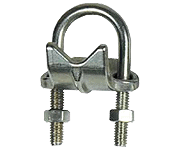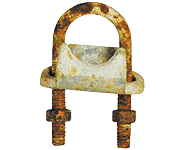Petrochemical
STAINLESS STEEL CONDUIT & FITTINGS FOR PETROCHEMICAL PLANTS
Corrosive Agents
Petrochemical plants take natural resources (e.g., natural gas, crude oil, petroleum, minerals, etc.) and convert them to byproducts such as polyethylene, propylene, ethylene, etc. These byproducts are then used to make final products such as plastics, fertilizer, fuel, and more. The byproducts of petrochemical plants are sometimes referred to as the “building blocks” for other industrial processes.
The processes involved in transforming natural resources to byproducts can often involve exposure to various hydrocarbons and toxic gases as well as other process chemicals such as solvents (e.g., acetic acid and organic chlorides), neutralizers (e.g., caustic), and catalysts (e.g., hydrogen fluoride, sulfuric acid, aluminum chloride). These process chemicals can all cause corrosion.
One of the most commonly produced petrochemicals is ethylene. Ethylene is converted from ethane in a facility called a “cracker.” In the cracker, ethane and small amounts of propane are sent to a series of furnaces where they are heated to temperatures around 1500°F. This heat breaks (or “cracks”) the bond of the ethane molecule, releasing two hydrogen atoms. A new molecule, ethylene, is formed. From there, the hot gases are sent to heat exchangers where steam is used to cool the mixture. The steam and gases are then sent to a tower where cold water is used to further cool the mixture in a process called “quenching.” Quenching forces all of the liquids to the bottom of the tower. One product stream leaving the tower is a combination of water and heavy hydrocarbons typically referred to as pyrolysis gasoline, which is later processed into ingredients for plastics, chemicals, and automotive fuel. The second stream is a gaseous mixture of hydrogen and light hydrocarbons, which goes to a compressor, then to a condenser, then to a cold box; this compresses the mixture and drops the temperature, liquefying the gases. The liquefied mixture goes through distillation towers that isolate and remove each specific gas, such as ethylene. Most ethylene is polymerized to make polyethylene; this process often happens in a facility located in close proximity to the cracker. Due to its highly flammable nature, the ethylene is transported via pipeline to the polymerization plant where it is turned into small, plastic pellets called polyethylene resin. These are the feedstock for many plastic end products.
As can be seen in the process of producing ethylene, other corrosion catalysts such as water, steam and extreme temperatures are often found in addition to process chemicals.
Other Factors
In addition to corrosive agents, some of the petrochemicals produced can be highly flammable, another factor to consider when choosing materials. Reinstallation in these environments may be considered hazardous to installers given the amount and type of chemicals used and created.
Stainless Steel Solutions
Stainless steel offers superior corrosion resistance compared to the formerly popular PVC-coated, zinc-plated, galvanized, and carbon steels — materials that have low initial overhead expenses but costly maintenance and replacement fees. The long service life of stainless steel — 10-20 times longer than carbon steel or iron in the same working environment — makes it the best overall choice to defend against the harmful effects of corrosion.
Note: Results after 4-week salt spray test.
Additionally, austenitic grades (Type 304 and Type 316 SS) have stable crystalline structures that result in good mechanical properties, including strength and ductility, at both high and low temperature extremes.
Not only does stainless steel offer corrosion resistance and durability, it has an aesthetic appeal of a bright polished finish and benefits the environment as it is able to be re-melted and reused, making it recyclable.
The success of your application can hinge on material selection. Gibson Stainless manufactures stainless steel products that address corrosion challenges while offering easy installation and minimal maintenance and repair.
To learn more about our stainless steel selection, visit our catalog or contact us today.




